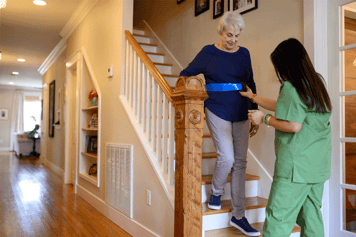Heart disease is the number one cause of disability and death in the United States today—according to the CDC, some 85.6 million Americans live with some form of cardiovascular disease. A major and growing public health problem, an estimated 6.2 million people in our country suffer specifically from heart failure.
What is Heart Failure?
Heart failure is a chronic, long-term condition in which the heart doesn’t pump blood as efficiently or effectively as it should. Despite the name, heart failure does not mean that the heart has actually “failed”; it means that the heart muscle has weakened or has a mechanical problem that limits its ability to function. As a result, the heart can no longer meet the demands of the body and there is not enough oxygen-rich blood reaching the cells.
As the damage progresses, it will lead to fluid building up in the lungs, which will cause shortness of breath. The kidneys begin to retain water and sodium, which can lead to kidney failure. Edema sets in and can affect the extremities and other organs.
The stages of heart failure:
- Stage A: A person has not yet developed heart failure but has a high risk due to one or more pre-existing conditions, such as:
- High blood pressure
- Coronary artery disease
- Diabetes
- Stage B: A person has not developed heart failure or its symptoms, but has received a diagnosis of systolic left ventricular dysfunction.
- Stage C: A person has ongoing or past symptoms of heart failure and currently has structural heart disease.
- Stage D: A person has advanced heart failure that is difficult to manage with standard treatment.
There is no cure, however with medical intervention, treatment options and lifestyle changes, the condition can be managed quite well.
How Will Heart Failure Affect Quality of Life?
Heart failure is a leading cause of hospitalization for those over the age of 65 and represents a significant clinical burden—there are few diseases that take a greater toll on our healthcare system. About half of hospital readmissions are related to the comorbidities and/or mismanagement of the symptoms of heart failure.
One of the biggest concerns for patients post discharge is how to live with this disease and have access to healthcare during this ongoing journey. Heart failure often goes hand-in-hand with other serious health conditions such as diabetes, hypertension, atrial fibrillation, kidney issues, and COPD (Chronic Obstructive Pulmonary Disease). Most people with heart failure have at least one other significant cardiovascular condition, making living at home independently a challenge that needs careful monitoring.
Patients will need to rely on more support and resources; those who lack this intervention will often end up readmitted.
[action 1]
It is crucial to implement appropriate interventions through comprehensive discharge instructions and having a plan of care in place to maintain stability and quality of life. With proper management of medications, suitable lifestyle changes and a specifically tailored care plan, patients with heart failure can live longer, healthier, more comfortable lives.
Amedisys provides an interdisciplinary heart failure program with a range of home health care services to help patients manage their condition at home, supporting their health and wellness and promoting independence. Our compassionate, interdisciplinary team works collaboratively with physicians to determine the best course of action, and also often includes specialized and skilled nursing care, physical therapy, occupational therapy, speech therapy and social work.
Our approach is also to provide patients and caregivers with the education that they need to monitor symptoms and maintain a healthy lifestyle. We consider patients and their support network to be valuable members of our team, as they make a tremendous difference in enhancing and improving quality of life.
We help patients manage their conditions at home by providing them with:
- Education about medications
- Proper diet and nutrition information
- Techniques for improvements in strength and mobility
- Daily exercise routines
- Help to monitor vital signs
- Monitoring heart failure symptoms
- Weight monitoring and management
- Tips on what to do if symptoms worsen
The goal is a combined prevention and symptom management strategy aimed at maintaining wellness, slowing disease progression and reducing the need for emergency room visits and hospital readmission. By providing education and skilled transitional and continuing care, we support many patients' preference to recover and remain in their homes.
Resources:
- AHA Journals: Circulation: Cardiovascular Quality and Outcomes: High Value Home Health Care for Patients with Heart Failure: https://www.ahajournals.org/doi/10.1161/CIRCOUTCOMES.117.003676
- National Library of medicine: Practical Guide on Home Health in Heart Failure Patients: https://www.ncbi.nlm.nih.gov/pmc/articles/PMC3821536/
- Institute for Healthcare Improvement: Good Heart Failure Care Follows Patients Home: http://www.ihi.org/resources/Pages/ImprovementStories/GoodHeartFailureCareFollowsPatientsHome.aspx
- Virani SS, Alonso A, Benjamin EJ, Bittencourt MS, Callaway CW, Carson AP, et al. Heart disease and stroke statistics—2020 update: a report from the American Heart Association





